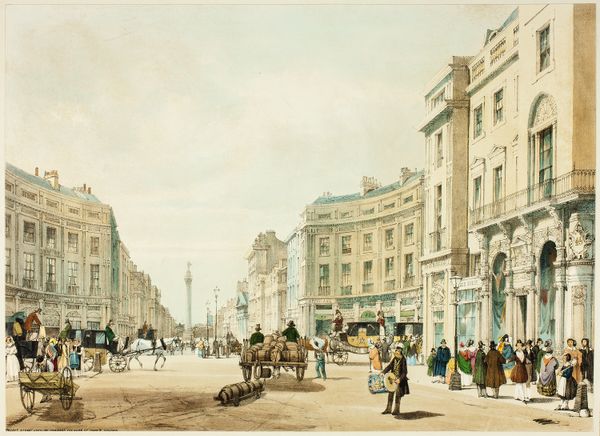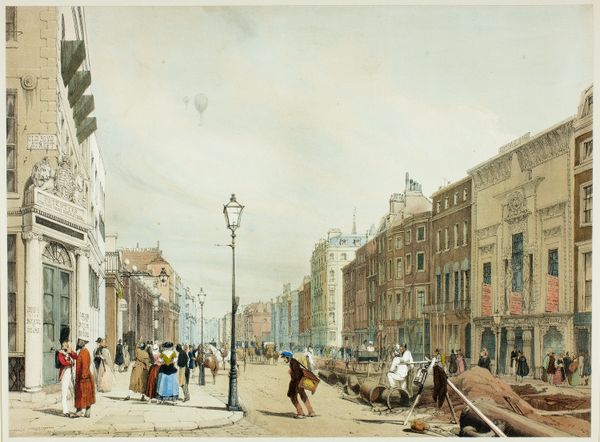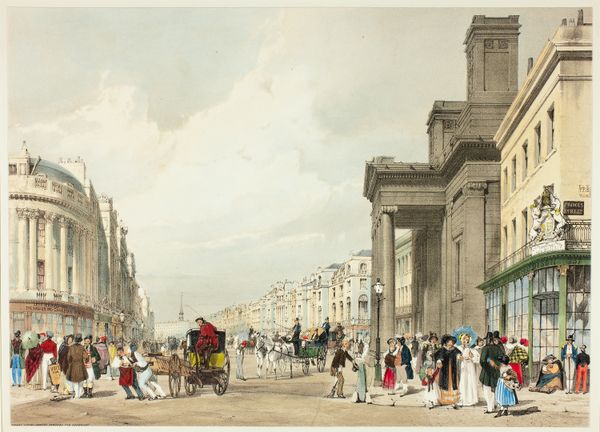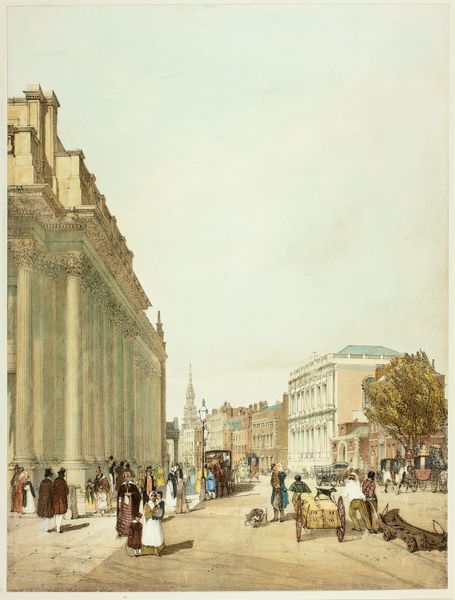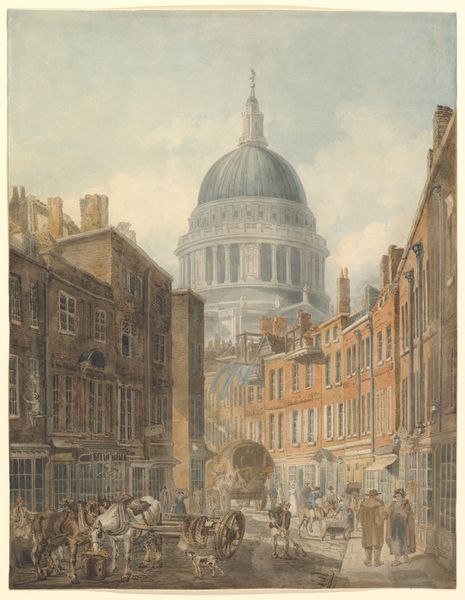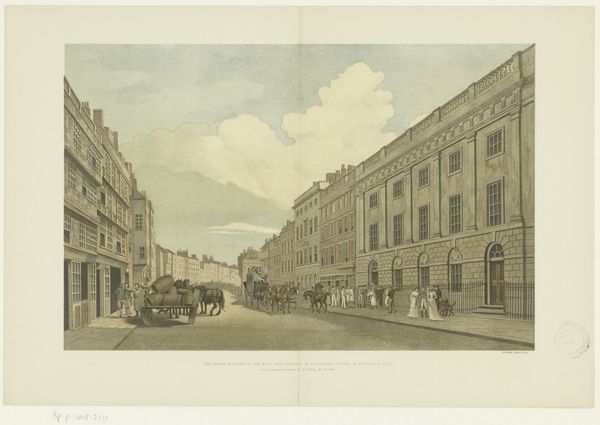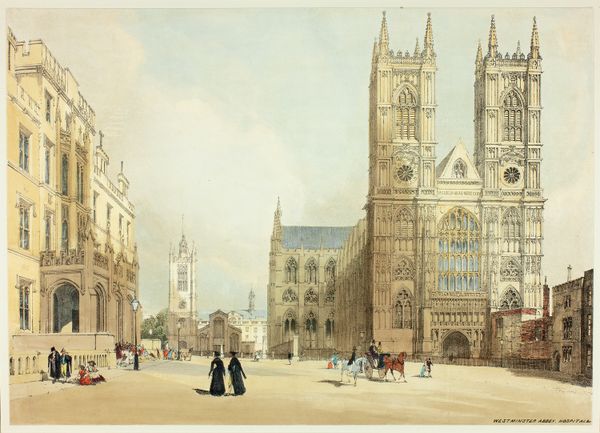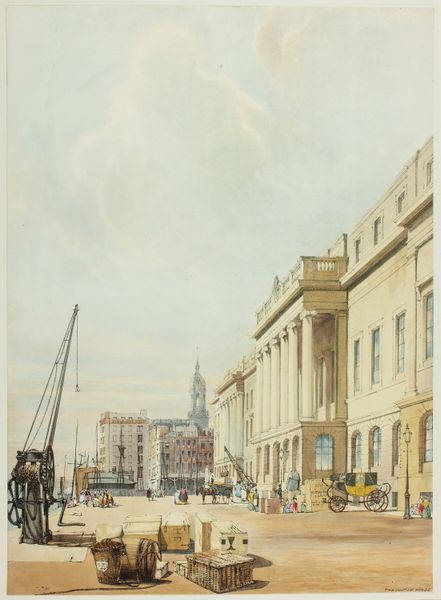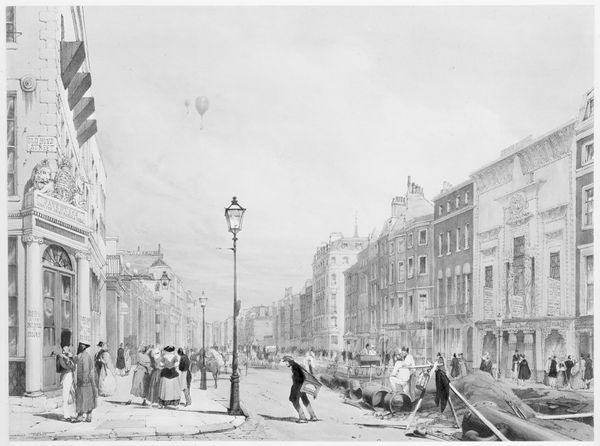
Mansion House, Cheapside, plate one from Original Views of London as It Is 1842
0:00
0:00
drawing, lithograph, print, paper, watercolor, architecture
#
drawing
#
water colours
#
lithograph
# print
#
street view
#
architecture mock-up
#
paper
#
watercolor
#
romanticism
#
cityscape
#
architecture
Dimensions: 315 × 427 mm
Copyright: Public Domain
Editor: This is "Mansion House, Cheapside, plate one from Original Views of London as It Is" created in 1842 by Thomas Shotter Boys. It's a lithograph with watercolor and drawing on paper. There's so much going on, it seems bustling, like a real snapshot of 19th-century London. How do you interpret this piece? Curator: I see layers of societal symbols here. Consider the architecture – the solid, imposing Mansion House contrasted with the more modest buildings receding into the distance. What do those architectural contrasts tell us about power and perspective in Victorian London? Editor: Maybe about the center of power versus the daily lives of regular people? Curator: Precisely. Notice also how the figures in the foreground are rendered with distinct detail, becoming less defined as they recede into the background. In what way does this echo the social stratification present at that time? How does the clothing or posture of the people impact your impression? Editor: The wealthier figures in their fashionable dresses near the front, and then almost a faceless crowd further away… it emphasizes that hierarchy. Is the tower in the background symbolic as well? Curator: Quite possibly, pointing towards aspirations and progress. Boys captured not just a cityscape, but a visual record laden with symbolic meanings. I would ask you now, does the continuity of symbols affect our interpretation today, connecting past to present? Editor: That's fascinating, I never thought of a cityscape as carrying that much meaning before. It makes you wonder what future viewers will infer from our own cityscapes. Curator: Exactly. Art serves as a cultural mirror, always reflecting and refracting our societal values. The trick is learning to truly see it.
Comments
No comments
Be the first to comment and join the conversation on the ultimate creative platform.
